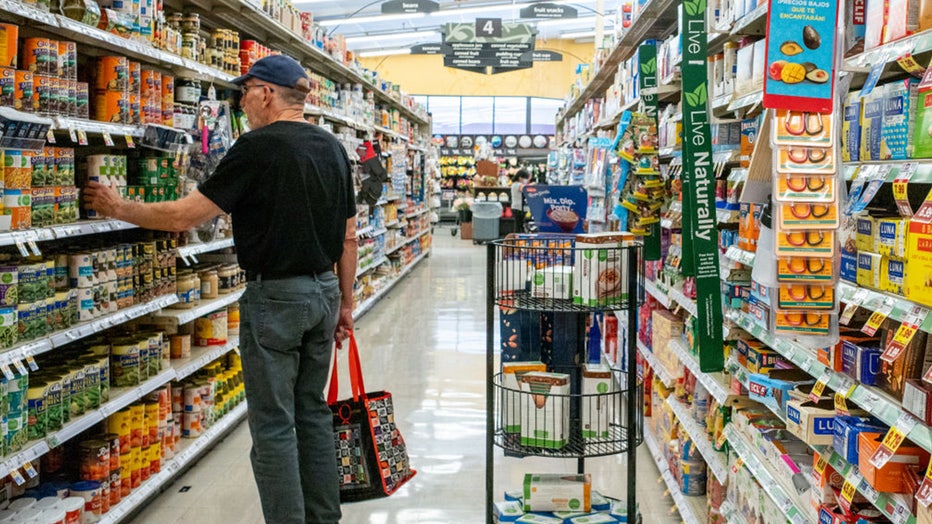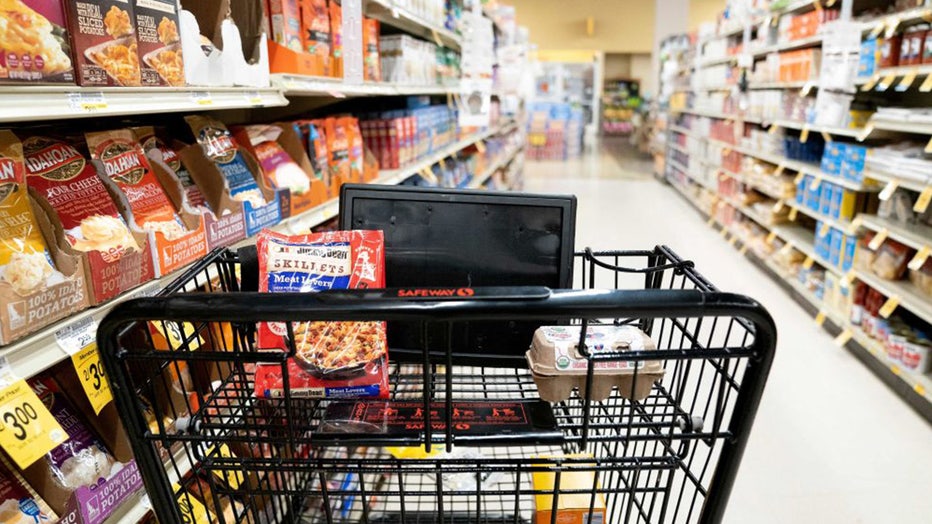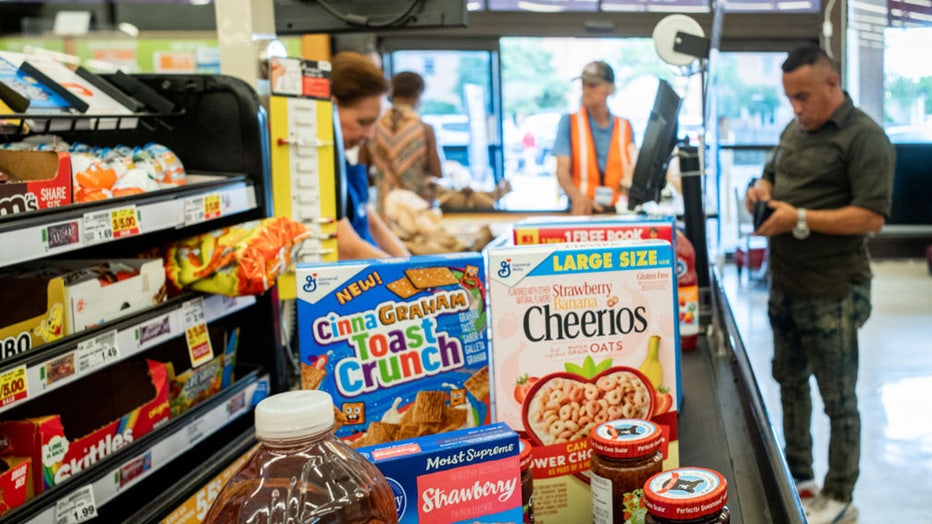US inflation barely declined in September, price increases slow down slightly
What causes inflation?
There are three factors that could lead to inflation which include demand-pull inflation, cost-push inflation and built-in inflation.
WASHINGTON - Measures of U.S. inflation barely declined in September, evidence that consumer price increases are grinding lower at a gradual pace.
Consumer prices rose 0.4% from August to September, below the previous month's 0.6% pace. Thursday’s report from the Labor Department also showed that year-over-year inflation was unchanged last month from a 3.7% rise in August.
And underlying inflation declined a bit: So-called core prices, which exclude volatile food and energy costs, climbed 4.1% in September from a year earlier, down from a 4.3% pace in August. That is the smallest such increase in two years. Economists pay particularly close attention to core prices because they provide a good signal of inflation's likely future path.
Still, on a month-to-month basis, prices are continuing to rise faster than is consistent with the Federal Reserve’s 2% target. Core prices increased 0.3% from August to September, the same as in the previous month.
The report "was a mixed bag," said Laura Rosner-Warburton, senior economist at MacroPolicy Perspectives, a forecasting firm. "It still suggests that we have exited the higher inflation regime of the pandemic, but we’re still elevated."
Thursday's inflation data is unlikely to change the Fed's outlook, Rosner-Warburton said, because the central bank already expected only a gradual decline in inflation.

FILE - A customer shops in a Kroger grocery store on July 15, 2022 in Houston, Texas. (Brandon Bell/Getty Images)
"I don’t think this was an upside surprise to the Fed," she said. "This is probably in line with what they were expecting."
Rosner-Warburton, like most economists, expects Fed officials to keep their key interest rate unchanged at their next meeting in three weeks, which would leave it at 22-year high of 5.4%.
At the same time, the policymakers will likely "keep the door open to more hikes in the future," she said, including at their following meeting in December.
The main driver of last month's inflation was an uptick in housing costs. Rental prices and a measure that the government computes of the cost of home ownership, which together make up about a third of the total inflation index, accounted for most of overall inflation from August to September. Those costs also accounted for more than two-thirds of the increase in core prices compared with a year ago.
Rental prices rose 0.5% on a monthly basis for a second straight month. Measured year over year, rental costs are up 7.4%, down from a 7.8% rise in August.
Rosner-Warburton pointed to an unusual jump in housing prices in Los Angeles as accounting for much of last month's housing inflation, which may not be sustained. Economists have expected rental price increases to steadily moderate. They note that market measures of rents for newly leased apartments have cooled considerably in the past year as the construction of apartment buildings has jumped. It can take time for a decline in new rents to flow through to the government's measure.
"We’re somewhat skeptical of the uptick" in September, Rosner-Warburton said.

FILE - A grocery cart sits in an aisle at a grocery store in Washington, DC, on Feb. 15, 2023. (STEFANI REYNOLDS/AFP via Getty Images)
Higher gas prices also helped drive inflation for a second straight month. Those prices rose 2.1% just from August to September, after a 10.6% surge the previous month. Gas prices have since come down, though, and averaged $3.65 a gallon nationally on Thursday, according to AAA, down from $3.84 a month ago.
Fuel costs, though, remain much higher than pre-pandemic levels and have forced up shipping costs. That has created a burden for small-business people like Sandy Bialek, who owns Fatbat Brewing, a tap room in Hanover, Pennsylvania. Bialek said shipping costs have jumped for the malts that she buys by the pallet-load.
She has had to raise the average price for a beer at her brewery to about $8, from about $6.50, to offset a range of higher costs. Her price increases, she said, have led a few of her regulars to quip, "What are you putting in this beer?"
Many of Bialek's working-class local customers have cut back on their visits or drink less when they do come by. More of her business is now coming from visitors to the area.
"I think a lot of people are hunkering down and saving and waiting" for inflation to pass, Bialek said. "There’s a lot of uncertainty."
The more that inflation persists, the more it erodes household paychecks and makes it harder for people to pay for necessities like rent, gas and food. Adjusted for price changes, average hourly wages fell from August to September for a second straight month, the government said. Inflation-adjusted hourly pay has risen by a meager 0.5% from a year ago.
Consumers did receive some relief last month as prices declined for some goods. Clothing costs dropped 0.8%, though they're up 2.3% compared with a year earlier. Used car prices dropped for a fourth straight month, declining 2.5%. They're now down 8% from a year ago.

FILE - A cashier processes a customer's order in a Kroger grocery store on July 15, 2022 in Houston, Texas. (Brandon Bell/Getty Images)
Grocery prices, after soaring last year, have cooled. They ticked up just 0.1% from August to September and are 2.4% higher than they were a year ago.
Economists and Fed officials have long cautioned that inflation would likely ease in a bumpy and uneven way, though it is still expected to keep slowing into 2024. Thursday’s inflation data follows several speeches this week by Fed officials suggesting that they are inclined to leave their benchmark interest rate unchanged at their next meeting Oct. 31- Nov. 1.
Longer-term interest rates have spiked since the Fed’s policymakers last raised their key rate in July. Those higher long-term bond rates have led to more expensive mortgages, auto loans and business borrowing, a trend that could help cool inflation pressures without further Fed rate hikes.
On Wednesday, Christopher Waller, a member of the Fed’s governing board who has previously backed sharply higher rates to fight inflation, suggested that price increases are steadily cooling, potentially allowing the Fed to leave interest rates unchanged. Optimism has been growing that the Fed can tame inflation through the series of 11 interest rate hikes it imposed beginning in March 2022 without causing a recession.
"We’re in this position where we can kind of watch and see what happens," Waller said. If core inflation stays as low as it has in recent months, "we’re pretty much back to our target."
Inflation soared in 2021 as the economy roared out of the pandemic recession. Consumers were ramping up their spending on furniture, exercise equipment and appliances even while supply chain bottlenecks contributed to widespread shortages. Russia’s invasion of Ukraine then sent food and gas prices spiking. Inflation peaked at 9.1% in June 2002.
Since then, supply chains have unraveled, and food and energy prices have risen much more slowly. In the meantime, the economy has remained largely healthy, and the unemployment rate has barely risen. The steady decline in inflation, without a spike in layoffs or a recession, has confounded economists’ expectations that widespread job losses would be needed to slow price increases.

